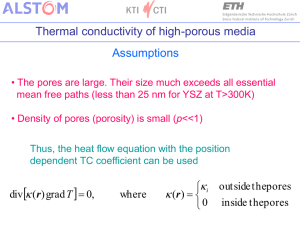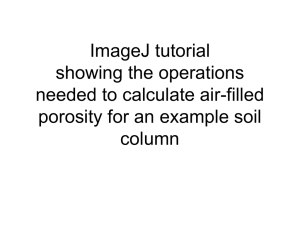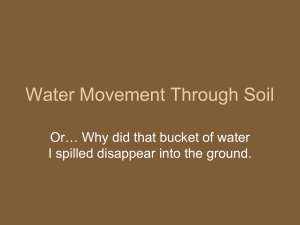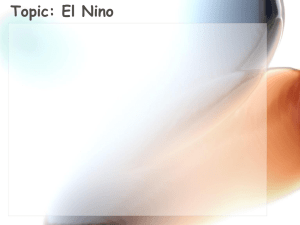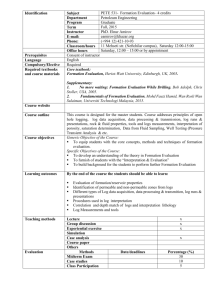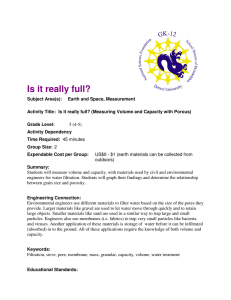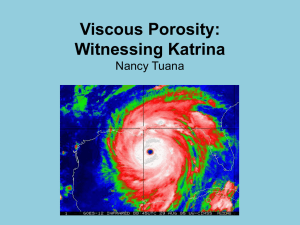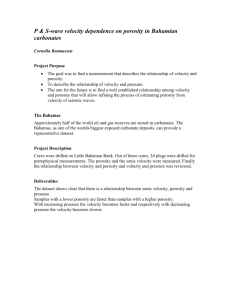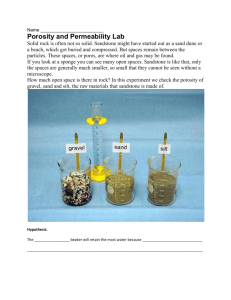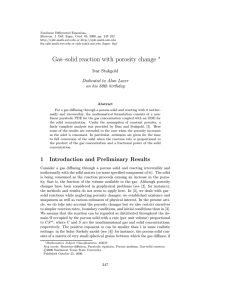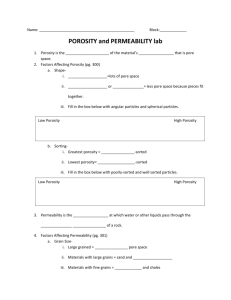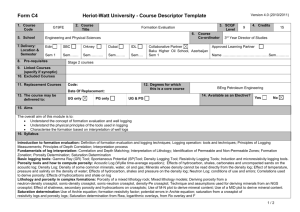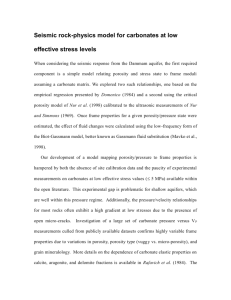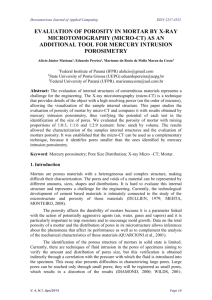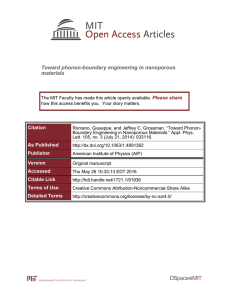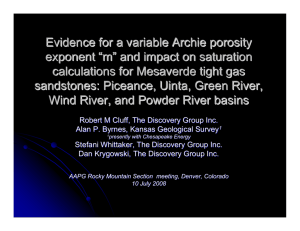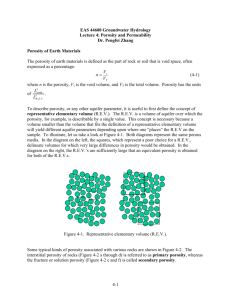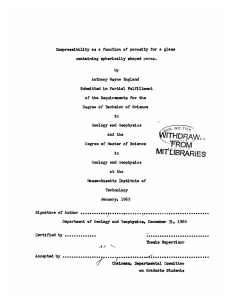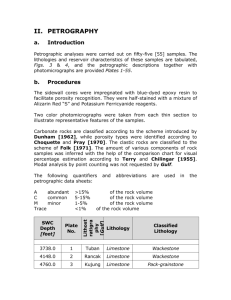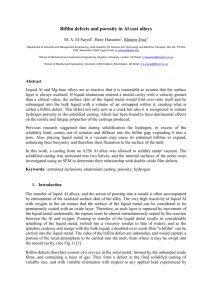Experimental studies on damaging materials of cultural heritage and
advertisement
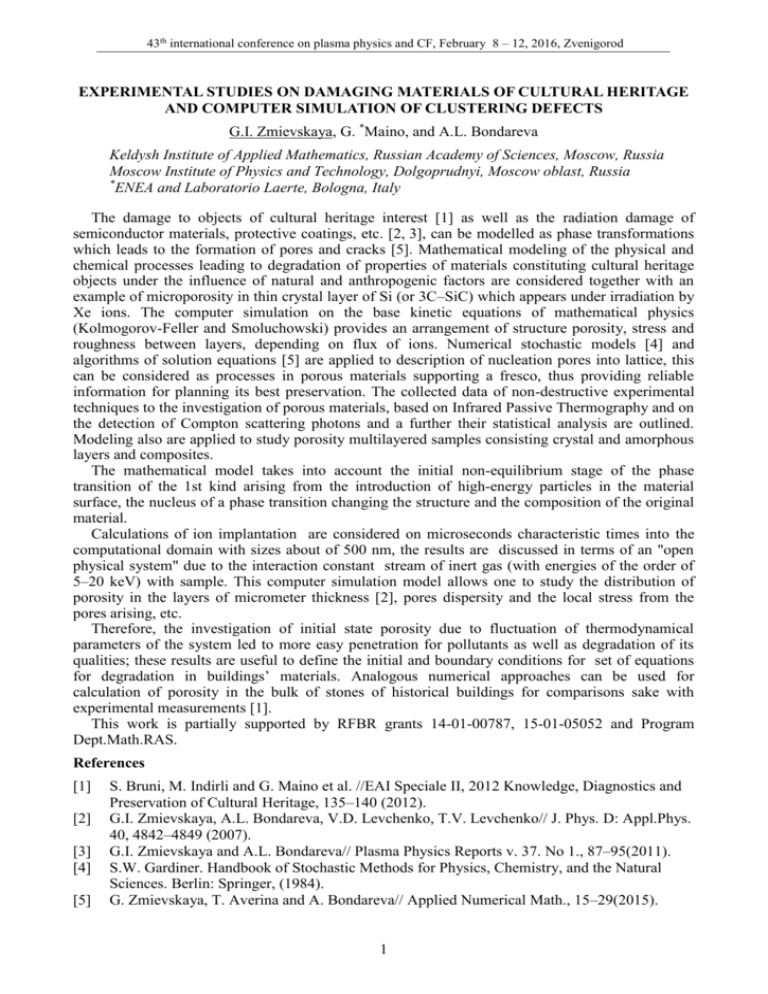
43th international conference on plasma physics and CF, February 8 – 12, 2016, Zvenigorod EXPERIMENTAL STUDIES ON DAMAGING MATERIALS OF CULTURAL HERITAGE AND COMPUTER SIMULATION OF CLUSTERING DEFECTS G.I. Zmievskaya, G. *Maino, and A.L. Bondareva Keldysh Institute of Applied Mathematics, Russian Academy of Sciences, Moscow, Russia Moscow Institute of Physics and Technology, Dolgoprudnyi, Moscow oblast, Russia * ENEA and Laboratorio Laerte, Bologna, Italy The damage to objects of cultural heritage interest [1] as well as the radiation damage of semiconductor materials, protective coatings, etc. [2, 3], can be modelled as phase transformations which leads to the formation of pores and cracks [5]. Mathematical modeling of the physical and chemical processes leading to degradation of properties of materials constituting cultural heritage objects under the influence of natural and anthropogenic factors are considered together with an example of microporosity in thin crystal layer of Si (or 3C–SiC) which appears under irradiation by Xe ions. The computer simulation on the base kinetic equations of mathematical physics (Kolmogorov-Feller and Smoluchowski) provides an arrangement of structure porosity, stress and roughness between layers, depending on flux of ions. Numerical stochastic models [4] and algorithms of solution equations [5] are applied to description of nucleation pores into lattice, this can be considered as processes in porous materials supporting a fresco, thus providing reliable information for planning its best preservation. The collected data of non-destructive experimental techniques to the investigation of porous materials, based on Infrared Passive Thermography and on the detection of Compton scattering photons and a further their statistical analysis are outlined. Modeling also are applied to study porosity multilayered samples consisting crystal and amorphous layers and composites. The mathematical model takes into account the initial non-equilibrium stage of the phase transition of the 1st kind arising from the introduction of high-energy particles in the material surface, the nucleus of a phase transition changing the structure and the composition of the original material. Calculations of ion implantation are considered on microseconds characteristic times into the computational domain with sizes about of 500 nm, the results are discussed in terms of an "open physical system" due to the interaction constant stream of inert gas (with energies of the order of 5–20 keV) with sample. This computer simulation model allows one to study the distribution of porosity in the layers of micrometer thickness [2], pores dispersity and the local stress from the pores arising, etc. Therefore, the investigation of initial state porosity due to fluctuation of thermodynamical parameters of the system led to more easy penetration for pollutants as well as degradation of its qualities; these results are useful to define the initial and boundary conditions for set of equations for degradation in buildings’ materials. Analogous numerical approaches can be used for calculation of porosity in the bulk of stones of historical buildings for comparisons sake with experimental measurements [1]. This work is partially supported by RFBR grants 14-01-00787, 15-01-05052 and Program Dept.Math.RAS. References [1] [2] [3] [4] [5] S. Bruni, M. Indirli and G. Maino et al. //EAI Speciale II, 2012 Knowledge, Diagnostics and Preservation of Cultural Heritage, 135–140 (2012). G.I. Zmievskaya, A.L. Bondareva, V.D. Levchenko, T.V. Levchenko// J. Phys. D: Appl.Phys. 40, 4842–4849 (2007). G.I. Zmievskaya and A.L. Bondareva// Plasma Physics Reports v. 37. No 1., 87–95(2011). S.W. Gardiner. Handbook of Stochastic Methods for Physics, Chemistry, and the Natural Sciences. Berlin: Springer, (1984). G. Zmievskaya, T. Averina and A. Bondareva// Applied Numerical Math., 15–29(2015). 1
